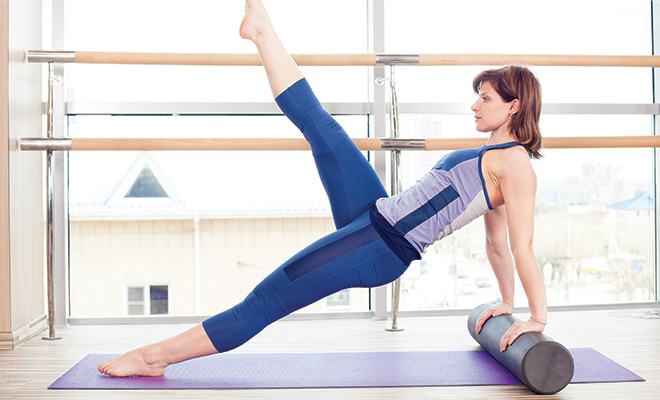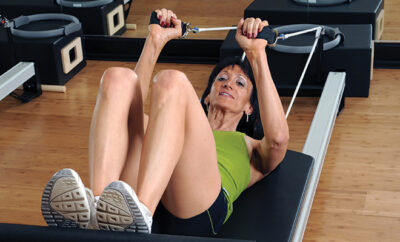
Balance and Flexibility: Affecting Everyone, Every Day
Are you Steady Eddie or a Shaky Tracy? Can you bend over and touch your toes or are your shins as far as you can go?
When it comes to fitness, balance and flexibility are often overshadowed by the number of miles we can run, what size dumbbells we’re using and how many crunches we can do. Many of us take our stability and flexibility for granted, but these two fitness components are essential to a safer, more mobile life.
But let’s get poised here. You don’t have to practice one-legged squats on a BOSU ball for two hours each day to gain balance, and you don’t have to put your ankles behind your head to reap the benefits of a simple flexibility program. Here are a few easy guidelines to get on track.
Balance
Balance is important at any age, so whether we participate in sports, run around after kids or work out at the gym, we are continually challenging our stability. But just like anything else, if we don’t use it, we’ll lose it. The older we get, the more likely we are to take a tumble, so if we can maintain stability as we age, we’ll greatly decrease the risk of falls, fractures or worse.
Find Your Way to Balance
If you enjoy group workouts, look for classes that blend components of muscular fitness and balance training. Exercises performed on an unstable surface such as a stability ball or BOSU ball are great at improving stability while strengthening at the same time. Core muscle strength (abdomen, pelvis, lower back) is also important for balance, since these muscles work together to support the spine and increase stability.
Try This
Stand on one leg and then the other for several seconds each. If this is too easy, try brushing your teeth or washing dishes at the same time. For even more of a challenge, try it with your eyes closed or on an unstable surface like a pillow. Practice as often as possible for best results.
Flexibility
Often neglected and somewhat forgotten, flexibility is an important part of health and well-being. Defined as the ability to move muscles or joints through a full range of motion, flexibility should start in the major muscle groups–legs, arms, back and hips. The trick to getting flexible is figuring out what you need to work on in particular and getting the job done efficiently.
Find Your Way to Flexibility
Assess your lifestyle–what might be hurting, what activities you do–then choose exercises, classes or even stretching sessions that will satisfy your needs. Look for exercises and search for classes that incorporate stretching after a workout, when the muscles are warm.
Flexibility can be gained in a variety of ways. Dynamic stretching can be performed while you are warming up for exercise with rhythmic motions of the body. After exercise is a good time to perform static stretches to gain flexibility, such as a seated hamstring stretch. Passive stretches involve using assistance such as a strap, your body weight, gravity or another person. For those who are just starting a stretching routine, it is best to start slowly and work your way up to longer and slightly more difficult stretches.
Try This
For an easy neck and shoulder stretch, sit or stand with shoulders relaxed and back straight. Place your left hand on your right ear and gently bring your left ear toward your left shoulder. Hold for 15 to 20 seconds and breathe slowly and controlled. Repeat on the other side.
3 Easy-To-Remember Flexibility Rules
First, stretch every day or more often if possible. Second, stretch only to the point that you feel a tug. You should not feel pain and you should never bounce. Finally, do not hold your breath. Exhale as you begin your stretch and then relax and breathe normally.
A Little Help
If you’re new to flexibility training, you may want to consider trying a basic stretching class or beginner yoga. Schedule a few sessions with a certified trainer who can give you guidance and supervision while finding the stretches that work for you. If you are a regular exerciser but flexibility hasn’t been a priority, start ending your workout with some mindful stretches or balance challenges.
The Results
Improving your balance and flexibility doesn’t happen overnight. Practice makes better for anyone at any age, so don’t be afraid to start incorporating stability training and stretching into your current workout. Consistency is important, so stick to a program and eventually you will see the results. HLM
Sources: acsm.org and sharecare.com.
Top Five Reasons to Practice Balance
1. Balance aids in body control.
2. Good balance improves performance.
3. Bodies work much harder while trying to balance, thus burning more calories.
4. Body control reduces injury in fitness and everyday activities.
5. Proper balance helps prevent falls.







